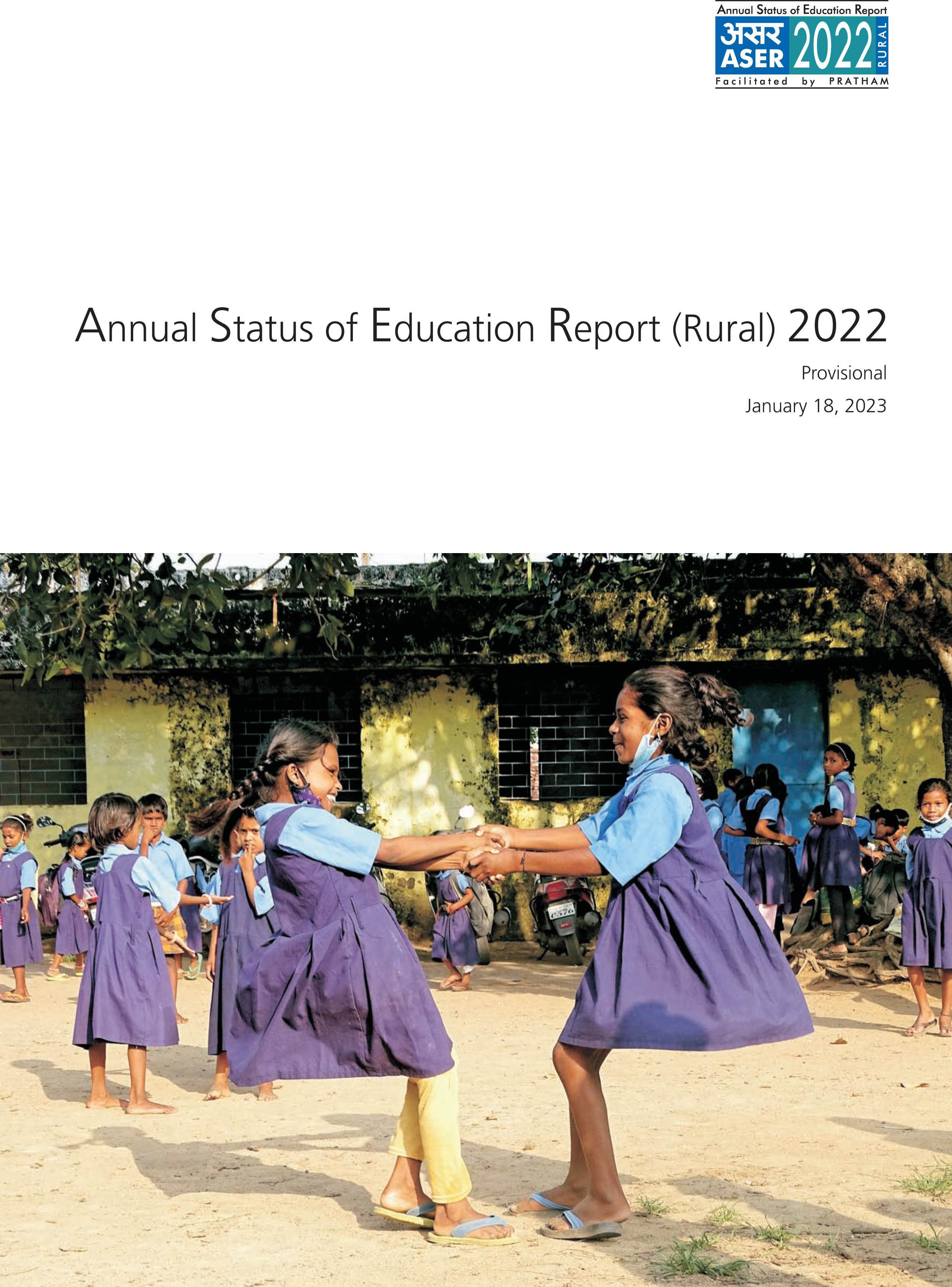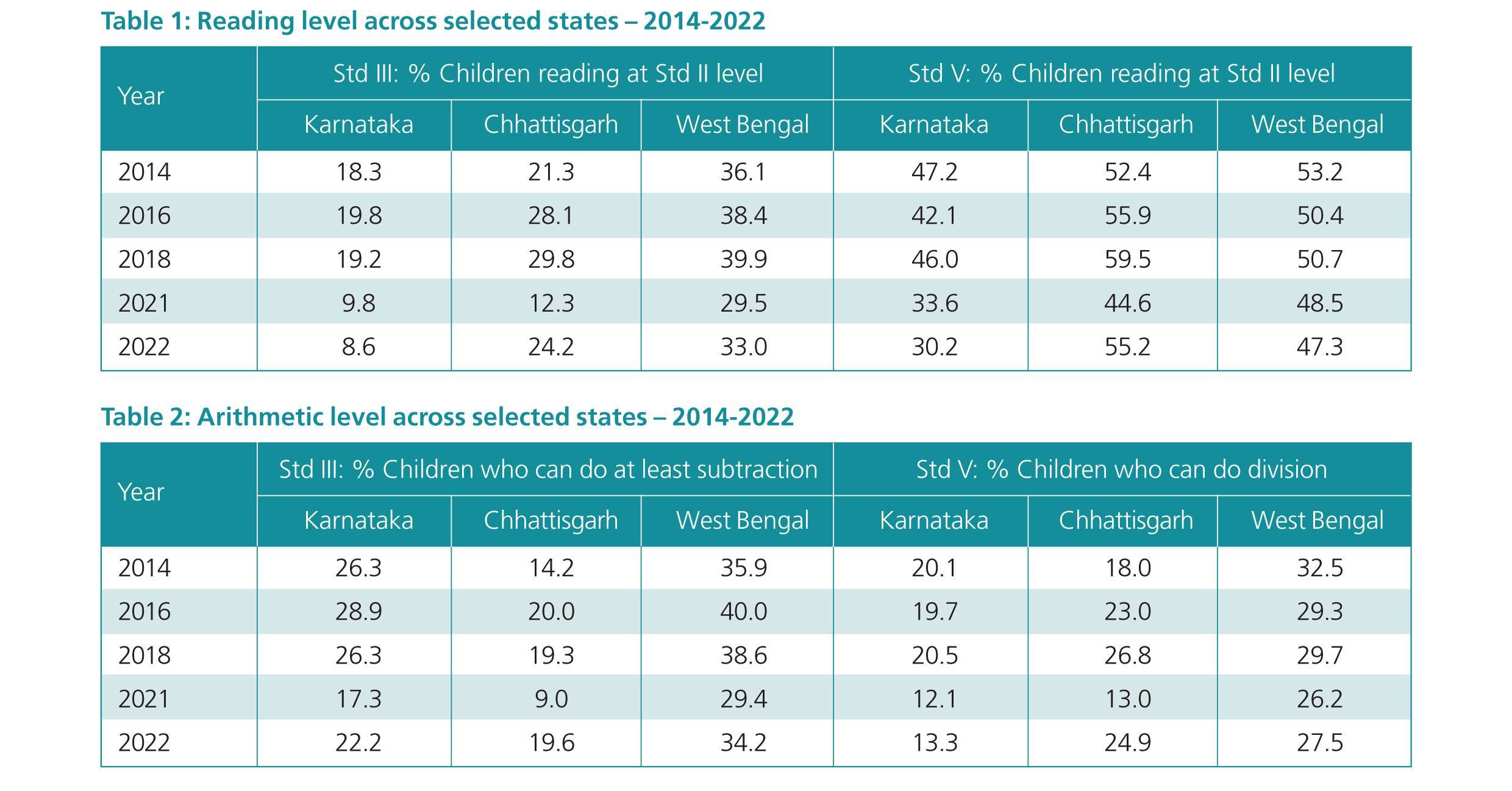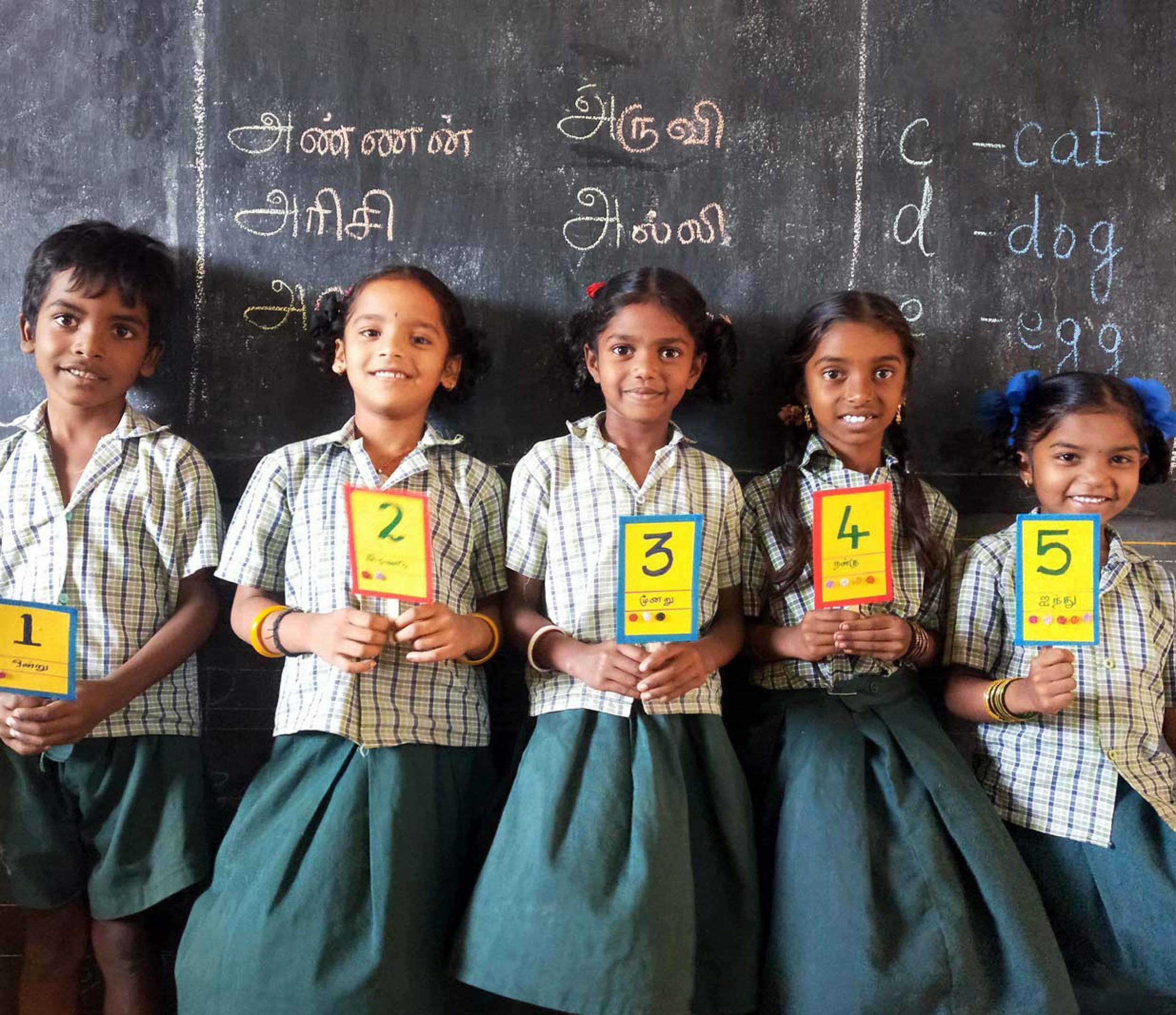Education after the pandemic: School enrolments up; learning proficiency down
The Annual Status of Education Report 2022 reveals that while enrolment figures post-pandemic have been above 95% for the past 15 years, the learning gap for foundational skills has widened further. A PrintWeek report
28 Mar 2023 | By Dibyajyoti Sarma
According to the Annual Status of Education Report (ASER) 2022, despite school closures during the pandemic, the overall enrolment figures, which have been above 95% for the past 15 years for the six to 14 years age group, increased from 97.2% in 2018 to 98.4% in 2022. This is good news. The bad news is that during the same period, the learning gap widened for foundational skills in reading and arithmetic, reversing several years of improvement.
Released by the NGO Pratham, ASER is a household survey conducted across 616 rural districts and covers 6.9 lakh children in the age group of three to 16 years to record their schooling status and assess their basic reading and arithmetic skills. The report is being brought out after four years and records the impact of school closures in 2020 and 2021, as well as the return to school of children in 2022. The proportion of children in this age group who are not currently enrolled also dropped to its lowest level ever to 1.6% from 2.8% in 2018, when the last full-scale ASER survey was conducted.
Government schools have seen a sharp increase in children enrolled from 65.6% in 2018 to 72.9% in 2022, reversing another trend of a steady decrease in student enrolments seen since 2006, when it was at 73.4%.

Decline in basic literacy
Despite the enthusiasm seen among parents and students towards schools, children’s basic literacy levels have taken a big hit, with their reading ability as compared to numeracy skills worsening much more sharply and dropping to pre-2012 levels.
The percentage of children in Class III in government or private schools who were able to read at the level of Class III dropped from 27.3% in 2018 to 20.5% in 2022. This decline is visible in every state, and for children in both government and private schools.
The ASER reading test assesses whether a child can read letters, words, a simple paragraph at Class I level of difficulty, or a story at Class II level of difficulty. The test is administered one on one to all children in the age group five to 16 in sampled households. Each child is marked at the highest level that she or he can reach comfortably.
Nationally, children’s basic reading ability has dropped to pre-2012 levels, reversing the slow improvement achieved in the intervening years. Drops are visible in both government and private schools in most states, and for both boys and girls.
States showing a decline of more than 10% points from 2018 levels include those that had higher reading levels in 2018, such as Kerala (from 52.1% in 2018 to 38.7% in 2022), Himachal Pradesh (from 47.7% to 28.4%), and Haryana (from 46.4% to 31.5%). Large drops are also visible in Andhra Pradesh (from 22.6% to 10.3%) and Telangana (from 18.1% to 5.2%).
Nationally, the proportion of children enrolled in Class IV in government or private schools who can at least read a Class II-level text fell from 50.5% in 2018 to 42.8% in 2022. States showing a decrease of 15% points or more include Andhra Pradesh (from 59.7% in 2018 to 36.3% in 2022), Gujarat (from 53.8% to 34.2%), and Himachal Pradesh (from 76.9% to 61.3%).
The drops in basic reading ability are smaller for Class VIII students, where 69.6% of children enrolled in government or private schools could read at least basic text in 2022 falling from 73% in 2018. The ASER reading test assesses whether a child can read letters, words, a simple paragraph at Class I level of difficulty, or a story at Class II level of difficulty.
Class III students who were able to do at least subtract dropped from 28.2% in 2018 to 25.9% in 2022. While Jammu & Kashmir, Uttar Pradesh and Madhya Pradesh maintained or improved slightly over 2018 levels, steep drops of more than 10 percentage points are visible in Tamil Nadu. The proportion of children in Class V across India who can carry out division has also fallen slightly from 27.9% in 2018 to 25.6% in 2022.
The ASER arithmetic test assesses whether a child can recognise numbers from one to 9, recognise numbers from 11 to 99, do a 2-digit numerical subtraction problem with borrowing, or correctly solve a numerical division problem (three digit by one digit). The tasks are administered one on one to all children in the age group 5 to 16 in sampled households. Each child is marked at the highest level that she or he can reach.
Nationally, children’s basic arithmetic levels have declined over 2018 levels for most grades. But the declines are less steep and the picture is more varied than in the case of basic reading.
The performance of Class VIII students in basic arithmetic is more varied. Nationally, the proportion of children who can do division has increased slightly, from 44.1% in 2018 to 44.7% in 2022. This increase is driven by improved outcomes among girls as well as among children enrolled in government schools, whereas boys and children enrolled in private schools show a decline over 2018 levels. Children in Class VIII in government schools did significantly better in 2022 than in 2018 in Uttar Pradesh (from 32% to 41.8%) and Chhattisgarh (from 28% to 38.6%), but were significantly worse off in Punjab (from 58.4% to 44.5%).
While families withdrew students from private schools to save money spent on tuition fees, they also invested in private tuition classes, which increased as the proportion of such students rose further from 26.4% in 2018 to 30.5% in 2022 in both private and government schools. This may also be the reason why learning gaps are sharper in reading because students typically choose to study math and science in tuition classes.
The report also lays to rest apprehensions about the pandemic forcing families to withdraw girls from schools and force them into early marriages. It finds that the percentage of girls in the age group of 11-14 years who were out of school declined to 2% from 4.1%. The decrease in the proportion of girls not enrolled in school is even sharper among older girls in the 15-16 years age group, which stood at 7.9% in 2022 as compared with 13.5% in 2018.

Back after four years
ASER 2022 returned to the field nationwide after a gap of four years, reaching 616 rural districts. This year’s data will be especially valuable as it comes after schools reopened after prolonged closures due to the Covid-19 pandemic. As always, this household survey recorded the schooling status of children in the age group three-16 and assessed children aged five-16 in basic reading and arithmetic. Children’s English ability was also tested this year.
A national ASER survey has been done every year since 2005, except for 2015. The basic ASER implemented in 2022 focuses on the foundational skills of children in the elementary school-going age group and was done annually from 2005 to 2014 and then again in 2016 and 2018. Because tools, sampling strategies, and survey methods are comparable over time, ASER 2022 data can be compared with previous years to provide trends over time. Estimates of learning loss between 2018 and 2022 can provide important information to states and districts as they plan interventions for learning recovery and catch-up.

State of the school
As part of the ASER survey, one government school with primary sections is visited in each sampled village. Preference is given to a government upper primary school (Class I-VII/VIII) if one exists in the village. In 2022, ASER surveyors visited 17,002 government schools with primary sections. 9,577 were primary schools and 7,425 were upper primary schools.
The proportion of government schools with less than 60 students enrolled has increased every year over the last decade. Nationally, this figure was 17.3% in 2010, 24% in 2014, 29.4% in 2018, and stands at 29.9% in 2022. The states with the highest proportion of small schools in 2022 include Himachal Pradesh (81.4%) and Uttarakhand (74%). However, some states show a decrease in the fraction of small schools, such as Uttar Pradesh (from 10.4% in 2018 to 7.9% in 2022) and Kerala (from 24.1% in 2018 to 16.2% in 2022).
Nationally, small improvements are visible in all Right to Education-related indicators over 2018 levels. For example, the fraction of schools with usable girls’ toilets increased from 66.4% in 2018 to 68.4% in 2022. The proportion of schools with drinking water available increased from 74.8% to 76%, and the proportion of schools with books other than textbooks being used by students increased from 36.9% to 44% over the same period.

Key findings
- ASER 2022 reached 616 districts and a total of 19,060 villages in rural India. 374,544 households and 699,597 children in the age group 3 to 16 were surveyed.
- There has been an improvement in enrolment levels of children in the age bracket of six to 14 years from 97.2% in 2018 to 98.4% in 2022.
- There has been an increase of 7.3% points in government school enrolment in the period 2018 to 2022.
- The report also shows a surge in students attending tuition classes. Between 2018 and 2022, in all states, there is an increase in the proportion of children who attend tuition classes.
- In 2018, 28.1% of Class III students could do subtraction, while 31.1% of Class V children and 41.4% of Class VIII students could do division. In 2022, in a steep decline of arithmetic knowledge, only 18.5% of Class III students can do subtraction as well as 20.1% of Class V and 38.1% of Class VIII students can do division.
- Maharashtra saw a steady decline from 2018 to 2022 in students’ reading and arithmetic skills.
- The availability of smartphones in the homes of enrolled students has nearly doubled from 2018 to 2021, from 36.5% to 67.6%.
- Most sports-related indicators also remain at close to the levels observed in 2018. For example, in 2022, 68.9% schools had a playground, up slightly from 66.5% in 2018.
- Most children had received their textbooks for the current academic year. Textbooks had been distributed to all grades in 90.1% of primary schools and in 84.4% of upper primary schools.
- About 80% of all primary schools had received a directive to implement Foundational Literacy and Numeracy (FLN) activities with their students, and about the same proportion had at least 1 teacher who had received training on FLN.












 See All
See All